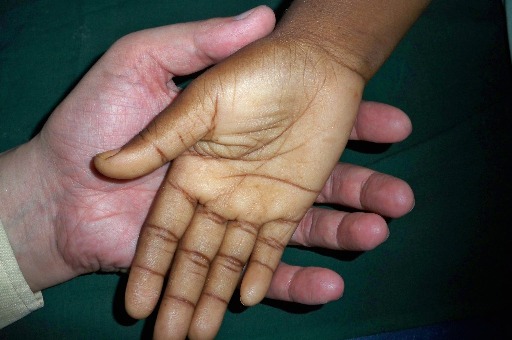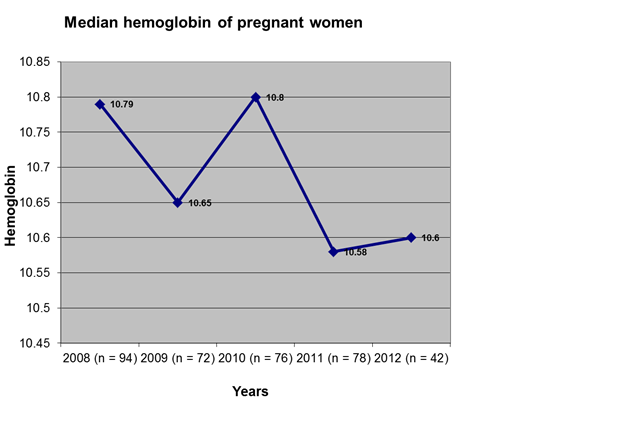 |
|
howrahtb
|
|
Iron Deficiency Hemoglobin of pregnant women in the slums of Howrah and Kolkata Iron deficiency is the most frequent micronutrient deficiency worldwide and affects mostly women of childbearing age and children in developing countries. Iron deficiency hampers the motor and mental development of children and puts pregnant women at higher risk of complications.
The hand of a woman with a low hemoglobin We have examined and recorded the hemoglobin concentration of pregnant mothers of our primary health care centers in different slums of Howrah and Kolkata, West Bengal, India, to get an estimate of the iron deficiency of the local maternal population and to observe the trend in time of this micronutrient deficiency in the local population. The data shown in the graphics indicate that less than half of the pregnant women from slums in Howrah and Kolkata reach the lower normal level of the hemoglobin concentration in pregnancy (11.0 gr/dl). We conclude cautiously that iron deficiency affects the majority of pregnant women in the slums of Howrah and Kolkata.
|
Copyright © 2010-2015 - www.howrahtb.com. All Rights Reserved
Site best viewed in IE 7 (1024*768) and above. If you have an older version of Internet Explorer, please upgrade your browser.

